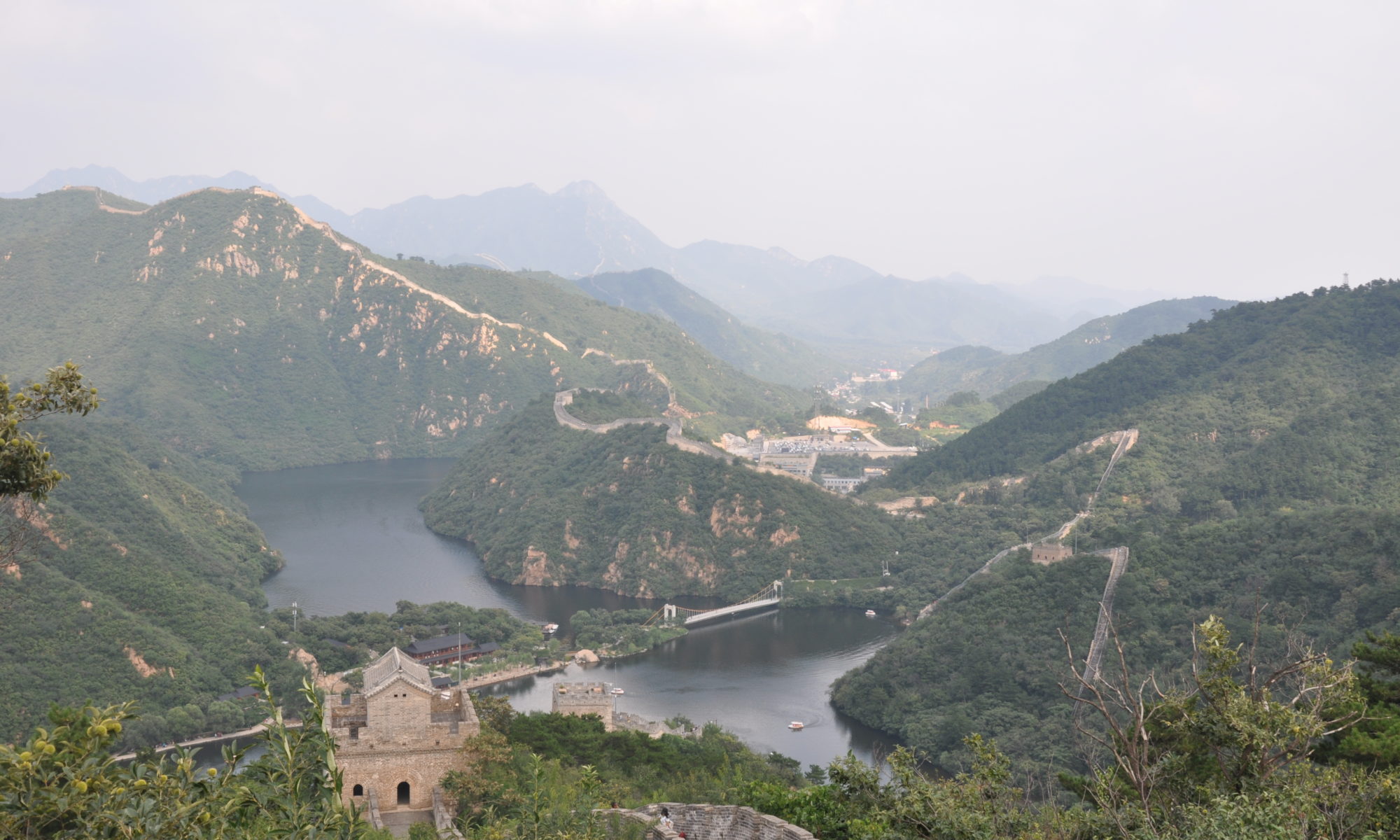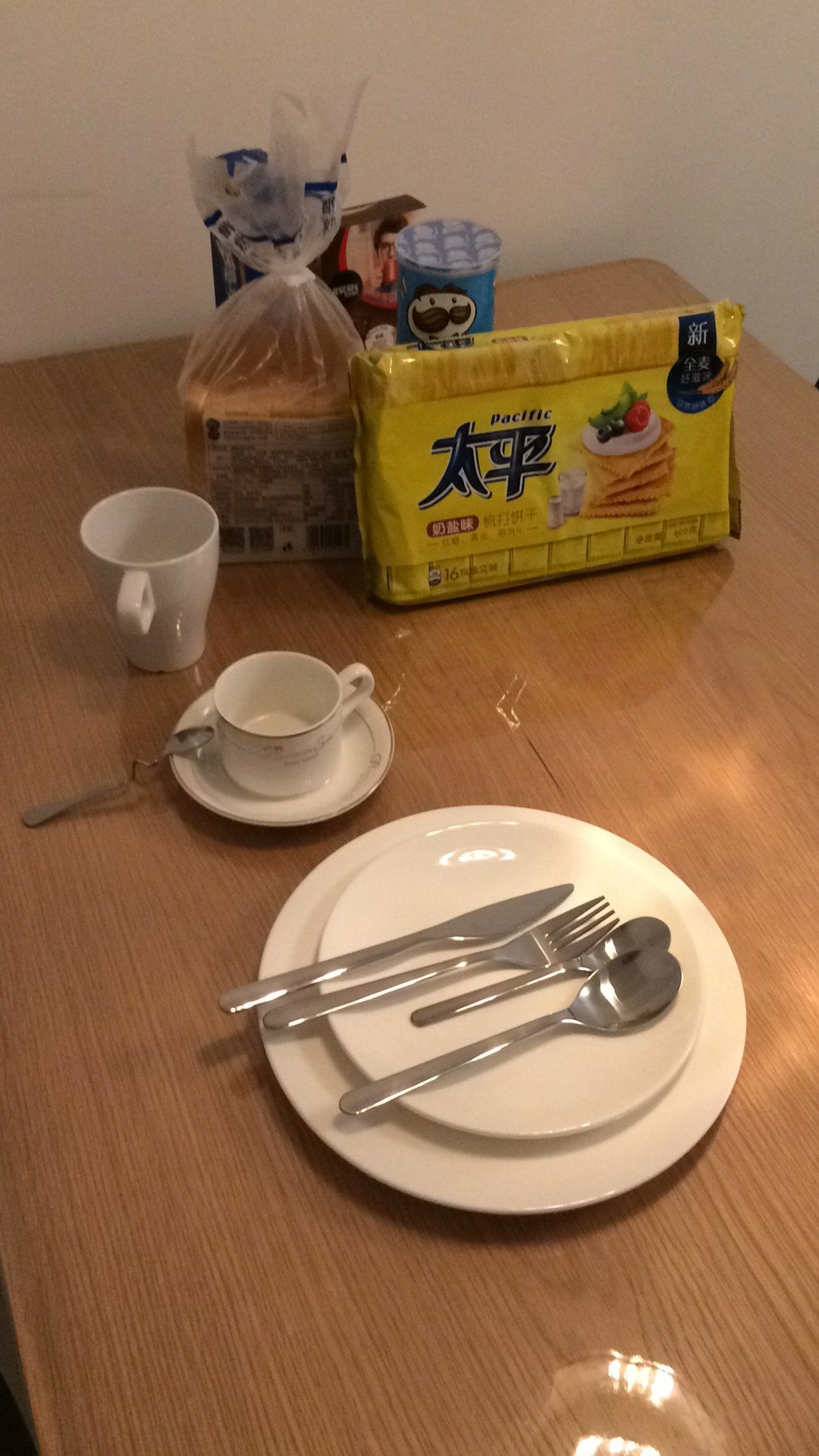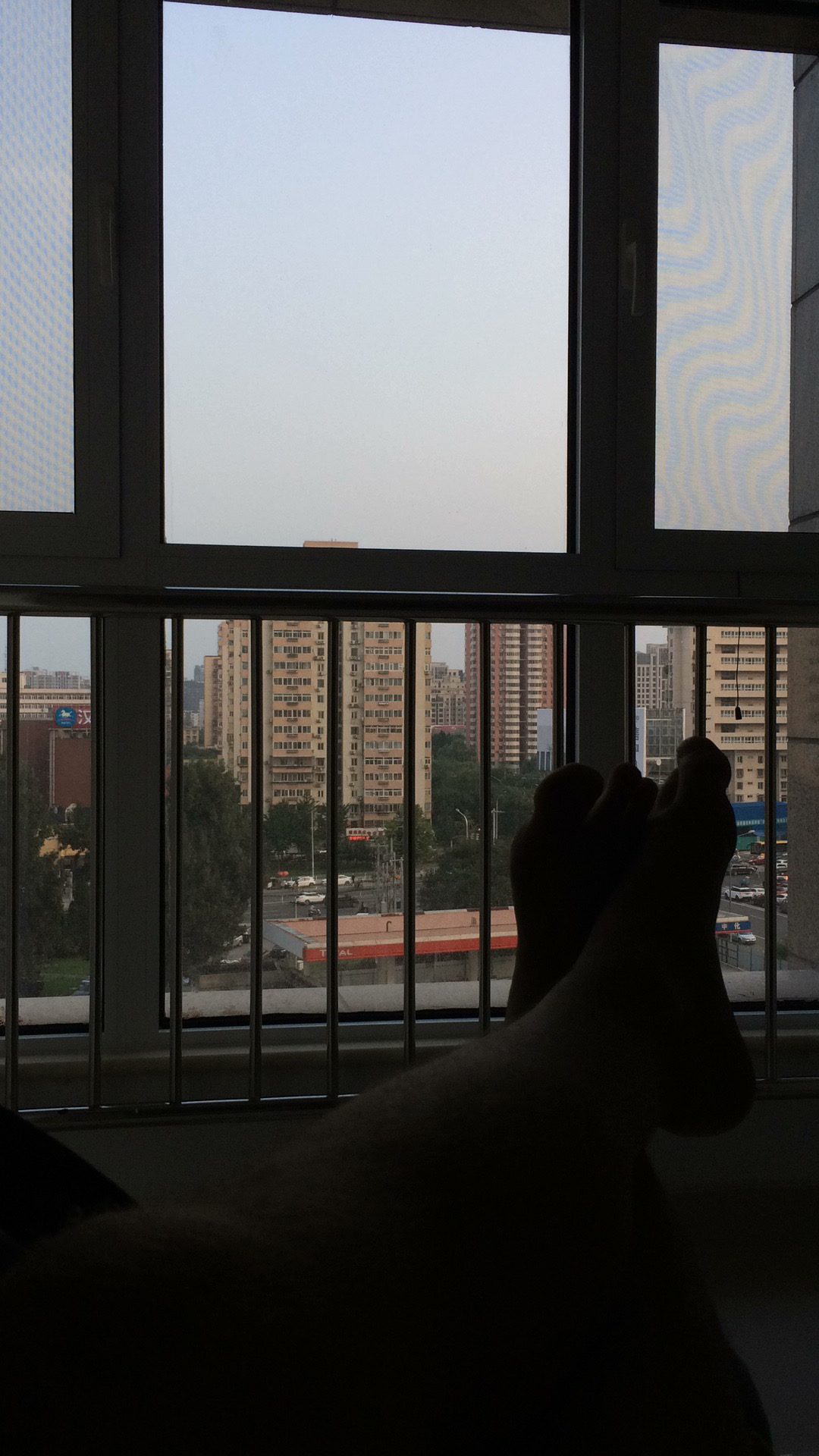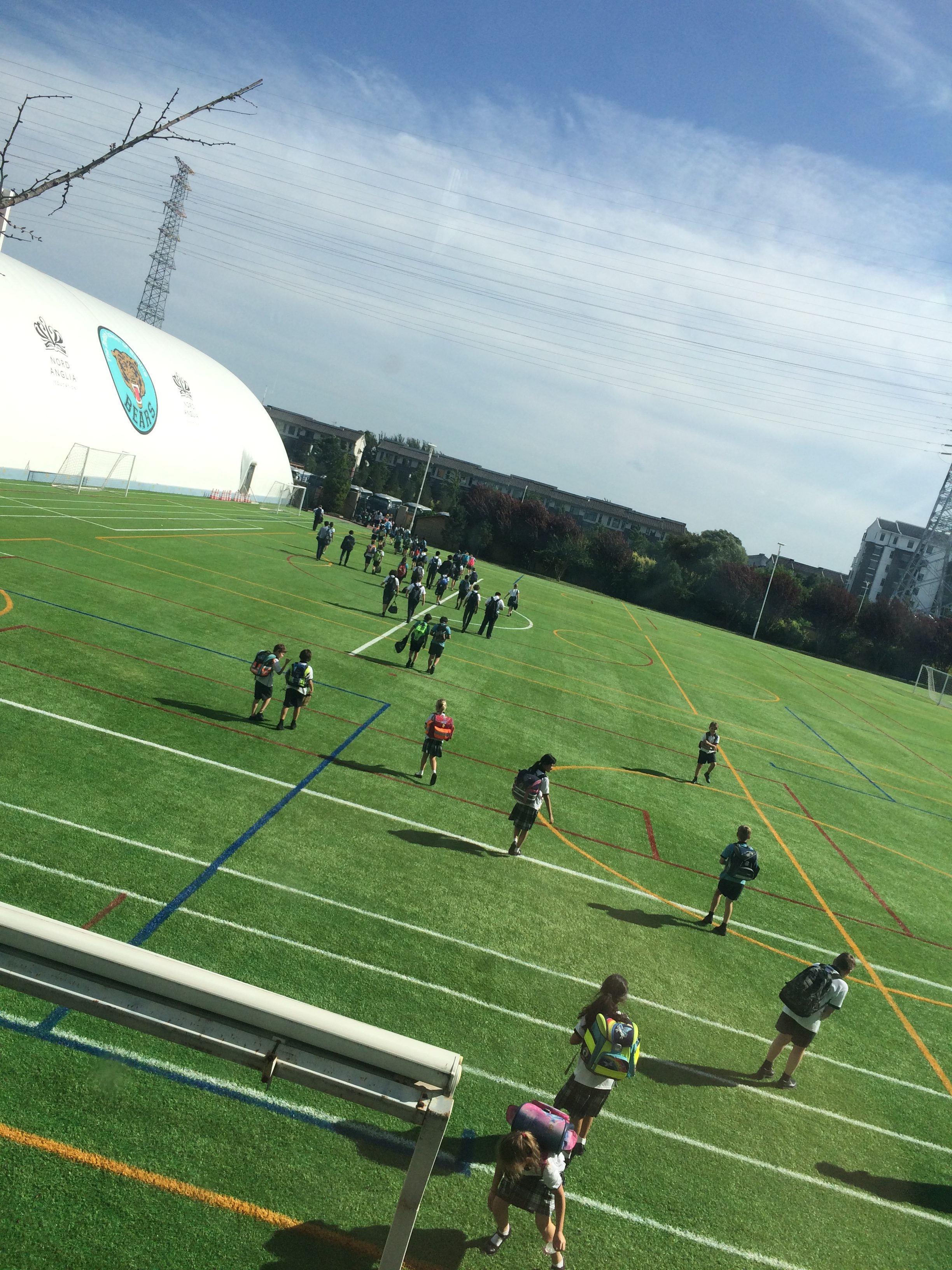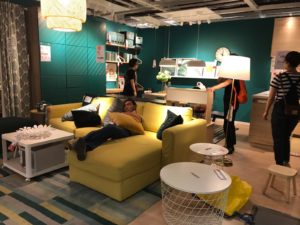You can find the English version of this blog-post here
Wie bereits beim letzten Mal angekündigt, gibt es diesmal einen Bericht über unseren Trip in der sogenannten goldenen Woche. In China gibt es insgesamt drei nationale arbeitsfreie Wochen. Das Frühlingsfest oder chinesisches Neujahr im Jänner/Februar, die Woche der Arbeit (die mittlerweile nur mehr 1 Tag lang ist) am 1. Mai und eben die Nationaltagswoche (der ist am 1. Oktober), in die auch praktischerweise das Mondfest fällt. Das Mondfest ist traditionellerweise ein Familienfest bei dem sich die Großfamilie irgendwo in China zu einer großen Familienfeier trifft. Es werden Mondkuchen mit verschiedenen Füllungen verteilt und interessanterweise oftmals nicht verspeist. Ich hab#s mir nicht nehmen lassen und gleich 5 davon verdrückt.
[ngg_images source=“galleries“ container_ids=“3″ display_type=“photocrati-nextgen_basic_thumbnails“ override_thumbnail_settings=“0″ thumbnail_width=“240″ thumbnail_height=“160″ thumbnail_crop=“1″ images_per_page=“20″ number_of_columns=“0″ ajax_pagination=“0″ show_all_in_lightbox=“0″ use_imagebrowser_effect=“0″ show_slideshow_link=“1″ slideshow_link_text=“typical moon cake“ order_by=“sortorder“ order_direction=“ASC“ returns=“included“ maximum_entity_count=“500″]
Vor allem die Menschen in Peking nützen diese Woche um ein wenig frische Luft zu schnappen und ihre Familien zu besuchen. Laut einem Artikel der mir auf WeChat untergekommen ist, wurden in der Golden Week über 700 Mio. (in Worten siebenhundertmillionen!!!) Reisen gebucht. Eine unfassbare, aber durchaus vorstellbare Zahl.
Da Kasia, abgesehen von dieser Woche, erst wieder zum Semesterende Ferien hat, haben auch wir beschlossen irgendwo hin zu reisen. Nachdem sie aber nur ein 1-entry Visum hat, kann sie nur einmal damit ins Ausland. Somit mussten wir uns nach einer Alternative innerhalb Chinas umsehen und mir wurde von einer Kollegin eine Reiseagentur namens FCN empfohlen, die Busreisen von Peking aus organisiert. In der Golden Week war das eine einwöchige Bustour entlang der alten Seidenstraße in den Westen Chinas.
FCN steht für Foreigner China Network und die Tourleiterin Sabrina bezeichnete es nicht als eine Reiseagentur, sondern als ein Social Network. Die gesamte Reise sollte sich wirklich ein wenig so anfühlen. Da diese Tour mit dieser Route zum ersten Mal stattfand, war nicht alles perfekt durchgeplant, aber die Teilnehmer waren ein bunter Haufen aus insgesamt 18 verschiedenen Ländern (AUS, AUT, POL, CH, GER, DEN, USA, CHN, FRA, THA, KOR, PAK, IDN, CRO,JPN, SAU, UK and RUS represent) und ausnahmslos zwischen 18 und 35 Jahren alt. Diese spezielle Zusammensetzung machte die gesamte Reise zu einem super Erlebnis!
[ngg_images source=“galleries“ container_ids=“4″ display_type=“photocrati-nextgen_basic_thumbnails“ override_thumbnail_settings=“0″ thumbnail_width=“240″ thumbnail_height=“160″ thumbnail_crop=“1″ images_per_page=“20″ number_of_columns=“0″ ajax_pagination=“0″ show_all_in_lightbox=“0″ use_imagebrowser_effect=“0″ show_slideshow_link=“0″ slideshow_link_text=“[Zeige eine Slideshow]“ order_by=“sortorder“ order_direction=“ASC“ returns=“included“ maximum_entity_count=“500″]
SDie erste Etappe der Reise war zugleich die längste und anstrengendste. Bereits die online angeführten 19 Stunden ließen uns überlegen ob wir denn nicht ersten Stop namens Xining direkt anfliegen sollten. Aus finanziellen Gründen und vor allem weil bereits alles ausgebucht blieben wir dann aber beim Bus. Dieser war leider komfortabler Schlafbus, sondern ein stinknormaler Reisebus mit gefühlt weniger Beinfreiheit als ein Ryanair-Flug. Was chinesische Reisebusse leider standardmäßig nicht mit sich bringen, ist eine Boardtoilette. Bei 50 Personen und 50% Frauenblasen (Sorry Ladies, aber ihr habt nun mal die kleineren…) konnte man sich schnell ausrechnen, dass es mit 19 Stunden nicht getan sein wird. Nach einer kurzen Vorstellungsrunde, bei der jeder einmal erklären dürfte, wie man „How are you?“ in der jeweiligen Landessprache sagt, wurde dann nach der ersten Pinkel-und Snackpause erst einmal von den meisten versucht die Fahrt mit Schlaf zu überbrücken. Bis um 2:00 Nacht das Licht anging. Zuerst der chinesische Reiseleiter (geschätzte 25 Jahre alt und ein relativ ungeduldiger Geselle): Kein Wort verstanden! Dann Sabrina, zwar auch Chinesin, aber immerhin relativ gutes Englisch: Wir machen auf dieser Raststation eine dreistündige Pause! Um 5:00 geht es weiter. Ob der zwei Fahrer in unserem Bus, gab es zunächst einmal verwirrte Gesichter bis geklärt werden konnte, dass in China zwischen 2:00 und 5:00 gesetzmäßig keine Reisebusse verkehren dürfen. Da sich mit uns noch geschätzte 10 weitere Reisebusse an der Raststation befanden, war alles voll mit Instantnudel-essenden Chinesen. Wenn der Magen knurrt, knurrt eben der Magen. Im Müll beseitigen gewinnen die Chinesen auch keine Medaille. Um kurz vor 5:00 sah es dann ca. so aus:
[ngg_images source=“galleries“ container_ids=“19″ display_type=“photocrati-nextgen_basic_thumbnails“ override_thumbnail_settings=“0″ thumbnail_width=“240″ thumbnail_height=“160″ thumbnail_crop=“1″ images_per_page=“20″ number_of_columns=“0″ ajax_pagination=“0″ show_all_in_lightbox=“0″ use_imagebrowser_effect=“0″ show_slideshow_link=“0″ slideshow_link_text=“[Zeige eine Slideshow]“ order_by=“sortorder“ order_direction=“ASC“ returns=“included“ maximum_entity_count=“500″]
Nach unzähligen Runden Uno, viel Schlaf, ein wenig vorsichtigem Smalltalk mit unseren Mitreisenden, (für meinen Geschmack) viel zu vielen Pinkelpausen (die übrigens alle ein Abenteuer für sich sind – Stichwort: Loch im Boden) und einem unfallbedingten Stau waren wir schließlich 30 Stunden später in Xining angekommen. Einchecken im – zugegebenermaßen sehr schicken – Hotel und direkt wieder ab in die Heia. Xining ist die Hauptstadt der riesigen Qinghai-Provinz und damit im Nordosten des tibetischen Hochlandes.
[ngg_images source=“galleries“ container_ids=“18″ display_type=“photocrati-nextgen_basic_thumbnails“ override_thumbnail_settings=“0″ thumbnail_width=“240″ thumbnail_height=“160″ thumbnail_crop=“1″ images_per_page=“20″ number_of_columns=“0″ ajax_pagination=“0″ show_all_in_lightbox=“0″ use_imagebrowser_effect=“0″ show_slideshow_link=“0″ slideshow_link_text=“[Zeige eine Slideshow]“ order_by=“sortorder“ order_direction=“ASC“ returns=“included“ maximum_entity_count=“500″]
Nicht allzu weit weg liegt auch die erste Attraktion die wir am nächsten Tag besuchten: der gleichnamige Qinghai See ist einer der größten Salzseen der Erde und liegt knapp 3200m über dem Meeresspiegel. Schon auf der eineinhalbstündigen Fahrt zum See konnten wir viele Herden von Schafen und Yaks beobachten und ich setzte mir es als persönliches Ziel ein Foto mit einem Yak zu machen. Dank einem lieben Kollegen im Gymnasium, der diesen Blog mit hoher Wahrscheinlichkeit sowieso nicht verfolgt, durfte ich nämlich in der Unterstufe den liebevollen Spitznamen „Grunzochse mit Tampon“ tragen. Na, wer checkt das Wortspiel?
Während der Großteil unserer Reisegruppe am Seeufer Abfangen spielte (Sabrina versuchte uns immer wieder zu „lustigen“, kleinen Spielchen zu motivieren) machten Kasia und ich uns also auf um Yaks zu fotografieren. Kaum 5min später bekam ich das erste, wirklich räudig aussehende Tier vor die Linse. Anscheinend unterhielten wir uns so lautstark über den Gestank des Rindviehs, dass wir die Aufmerksamkeit der besitzenden Familie erregten, die kurz darauf aus ihrem Zelt marschierte. Ich wollte mich schon mit eingezogenem Schwanz aus dem Staub machen, doch zum Glück konnte Kasia mit ihren großartigen Chinesisch skills verstehen, dass sie uns einluden Yak zu probieren. Kurz überlegt und hinein ins warme, kuschelige Zelt in dem die Mama mit ihren 5 Kindern nicht nur schlief, sondern anscheinend auch ein „Restaurant“ betrieb. Die Yak Innereien an denen alle genüsslich kauten, standen bereits am Tisch und anhand der bebilderten Speisekarte entschieden wir uns nur für „Tee“. Die große Portion Yak-Fleisch wäre mir alleine zu viel und für Kasia zu „exotisch“ gewesen. Keine zwei Minuten später standen zwei Tassen mit einer suppen-ähnlichen Flüssigkeit auf dem Tisch. Tee bedeutet wohl im tibetischen Hochland Yak-Milch (sehr fettig und nahrhaft) mit Wasser verdünnt und einem unbekannten Gewürz darin. Prädikat: ausgesprochen lecker. Nach einigen Fotos und „Smalltalk“ auf Chinesisch durfte ich dann auch noch an einem Yak-Darm kauen. Eher weniger lecker. Ich kann mir vorstellen, dass es nicht sehr viele weiße in diese Gegend und schon gar nicht ausgerechnet in dieses Zelt treibt. Als dann noch unsere Reisefreunde Jessi (AUS), Nicolina (DEN) und Emily (USA) die Wohnung betraten war die gesamte Familie komplett aus dem sprichwörtlichen Zeltchen (hehe).
[ngg_images source=“galleries“ container_ids=“5″ exclusions=“17″ sortorder=“11,6,14,7,8,9,15,16,10,13,17,18,12,19″ display_type=“photocrati-nextgen_basic_imagebrowser“ ajax_pagination=“1″ order_by=“sortorder“ order_direction=“ASC“ returns=“included“ maximum_entity_count=“500″]
Kasia, mit ihren blonden, voluminösen Locken nicht nur am zweiten Ziel des Tages ein beliebtes Fotomotiv. Die gesamte Reise mussten wir immer wieder stehen bleiben, um Fotos mit chinesischen Touristen zu machen. Auch mein rostfarbener Stolz von einem Bart erregte immer wieder Aufsehen. Das zweite Ziel war der nahegelegene Chaka (oder Caka) Salzsee bei dem es vor lauter Touristen nur so wimmelte. Hier wird seit über 3000 Jahren Salz abgebaut und laut einer Legende war es Kaiser Yan, neben dem gelben Kaiser einer der Begründer des Chinesischen Volkes. Er soll mit einer grünen Schlange in seiner linken und einem roten Drachen in seiner rechten Hand das Salz getragen haben. Nach ein bisschen Posieren und spazieren entlang des windigen Sees ging es dann auch schon weiter nach Delingha City ins nächste Hotel.
[ngg_images source=“galleries“ container_ids=“7″ exclusions=“49,48,53″ sortorder=“40,41,42,43,44,45,46,47,49,50,51,52,48,53″ display_type=“photocrati-nextgen_basic_imagebrowser“ ajax_pagination=“1″ order_by=“sortorder“ order_direction=“ASC“ returns=“included“ maximum_entity_count=“500″]
Den Abend ließen wir bei einem Hot Pot Dinner ausklingen. In ganz China sehr beliebt, zahlt man mitten in der Pampa natürlich deutlich weniger als in Beijing und darf für umgerechnet 7€ unendlich viele Zutaten in den persönlichen Suppentopf werfen (wahlweise scharf order normale Gemüsebrühe – wobei scharf wirklich scharf bedeutet, wie Kasia schmerzlich erfahren musste) und hat obendrauf auch gleich All you can drink dabei. Bier und „Wein“ (4% und schmeckt wie Traubensaft) inklusive. Die Zutaten, die man sich mit einer Zange in ein metallisches Chirurgen-Schälchen legt, reichen von Nudeln, über alle möglichen Sorten von Pilzen, Tofu und Nudeln bis hin zu Meeresfrüchten aller Art und Lamm- oder Schweinefleisch. Wenn man für so einen Spottpreis so unglaublich viel konsumiert, kriegt man schon fast ein schlechtes Gewissen.
[ngg_images source=“galleries“ container_ids=“7″ exclusions=“40,41,42,43,44,45,46,47,49,50,51,52″ display_type=“photocrati-nextgen_basic_thumbnails“ override_thumbnail_settings=“0″ thumbnail_width=“240″ thumbnail_height=“160″ thumbnail_crop=“1″ images_per_page=“20″ number_of_columns=“0″ ajax_pagination=“0″ show_all_in_lightbox=“0″ use_imagebrowser_effect=“0″ show_slideshow_link=“0″ slideshow_link_text=“[Zeige eine Slideshow]“ order_by=“sortorder“ order_direction=“ASC“ returns=“included“ maximum_entity_count=“500″]
Tag „2“ (eigentlich 4 wenn man die 1.5 Reisetage einrechnet) war dann einer der weniger gut durchgeplanten Aktionen. Eigentlich sollte es laut Online-Reiseverlauf in 7 Stunden in die Provinz Gansu zum Mingsha Shan Park (zu Deutsch „wiederhallender Sand“) in die Wüste gehen. Nach einem 6:30 Frühstücksbuffet (ein wenig anders als das klassische Frühstücksbuffet, das man aus westlichen Hotels kennt) und einer kleinen Verzögerung ging es stattdessen (inklusive Pausen) 10 Stunden durch die Wüste und wir kamen rechtzeitig um den Sonnenuntergang zu verpassen an. Bei einigen Reiseteilnehmern sorgte dies für unglaublichen Unmut und ein wenig dicke Luft im eh so engen Reisebus. Wieder einmal mit tausenden chinesischen Touristen gemeinsam erkundeten wir die Sichelmond-Oase, eine natürliche sichelmondförmige Oase die bei Dunkelheit auch sehr touristenwirksam ausgeleuchtet wird und von den umliegenden Sanddünen sehr gut fotografiert werden kann.
[ngg_images source=“galleries“ container_ids=“8″ sortorder=“56,54,55,57,58,59,60,61,62″ display_type=“photocrati-nextgen_basic_imagebrowser“ ajax_pagination=“1″ order_by=“sortorder“ order_direction=“ASC“ returns=“included“ maximum_entity_count=“500″]
Den zweiten Abend ließen wir beim Nachtmarkt in Dunhaung City ausklingen. Wieder einmal unter tausenden anderen Chinesen verspeisten wir Lamm, Huhn und Esel am Spieß. Der Esel war erwartungsgemäß recht zäh, dennoch überraschend saftig und (wie fast alles in China) sehr gut gewürzt! Kasia hatte auch eine Flasche polnischen Haselnussvodka eingepackt und in Kombination mit 3l Bierpokalen wurde es zu einem sehr feucht-fröhlichen Abend 🙂
[ngg_images source=“galleries“ container_ids=“9″ sortorder=“67,63,64,65,66,68,69,70″ display_type=“photocrati-nextgen_basic_imagebrowser“ ajax_pagination=“1″ order_by=“sortorder“ order_direction=“ASC“ returns=“included“ maximum_entity_count=“500″]
Die Ziele des dritten Tages waren, vor allem historisch gesehen äußerst spannend. Es ging zu den Mogao Grotten. Über hundert (teils zerstörte oder eingestürzte) Höhlentempel reihen sich hier aneinander die vor über 1000 Jahren von Mönchen in den Felsen gehämmert wurden. Heut kann man nur mehr ein paar dieser Höhlen besuchen und sie zählen zum Weltkulturerbe. Vor allem die siebenstöckige Pagode und der, sich darin befindende 30m hohe Buddha sind besonders beeindruckend. Nach den flüssigen Abenteuern in der Nacht zuvor waren für mich allerdings vor allem die Lammkebabs und die westliche Sitztoilette von besonderem Interesse. Kein weiterer Kommentar.
[ngg_images source=“galleries“ container_ids=“10″ display_type=“photocrati-nextgen_basic_imagebrowser“ ajax_pagination=“1″ order_by=“sortorder“ order_direction=“ASC“ returns=“included“ maximum_entity_count=“500″]
Der zweite Zwischenstopp des Tages war nicht minder interessant: der Jiayuguan-Pass (zu deutsch Pass zum gepriesenen Tal) bildet das westliche Ende der chinesischen Mauer und ist eine riesengroße Anlage in Trapezform mit mehreren stattlichen Wachtürmen und insgesamt 3 Verteidigungslinien. Natürlich teilten wir uns auch diese Attraktion mit unzähligen chinesischen Touristen, für die Besuche an die Mauer immer etwas besonderes sind. Angeblich ist man kein echter Mann, wenn man nicht zumindest einmal die chinesische Mauer erklommen hat. Von verschiedenen legendären Generälen verteidigt, gibt es auch heute noch Schauspieler die die chinesischen Soldaten mimen und in der Festung herumlaufen. Den einen oder anderen Mongolenjäger Junior kann man auch finden.
[ngg_images source=“galleries“ container_ids=“11″ display_type=“photocrati-nextgen_basic_imagebrowser“ ajax_pagination=“1″ order_by=“sortorder“ order_direction=“ASC“ returns=“included“ maximum_entity_count=“500″]
Außerhalb der Festung waren vor allem auch die verschiedenen Marktstände sehr interessant, die man überall an fast allen Touristenorten in dieser Gegend findet. Dort kann man sich für wenig Geld mit leckerem Chuan (Fleisch auf Spießen), Jianbing (palatschinkenartige, pikante Fladen) oder aufgeschnittenen Zuckermelonen eindecken.
[ngg_images source=“galleries“ container_ids=“12″ display_type=“photocrati-nextgen_basic_thumbnails“ override_thumbnail_settings=“0″ thumbnail_width=“240″ thumbnail_height=“160″ thumbnail_crop=“1″ images_per_page=“20″ number_of_columns=“0″ ajax_pagination=“0″ show_all_in_lightbox=“0″ use_imagebrowser_effect=“0″ show_slideshow_link=“0″ slideshow_link_text=“[Zeige eine Slideshow]“ order_by=“sortorder“ order_direction=“ASC“ returns=“included“ maximum_entity_count=“500″]
Am vorletzten Erkundungstag stand dann eines der großen Highlights der Tour auf dem Plan: Die Regenbogen-Berge im Danxia-Zhangye Nationalpark. Verschiedene geologische Bedienungen sorgen dort dafür, dass die Schichten der Berge in unterschiedlichen Farben zu sehen sind. Unter anderem flossen vor vielen tausenden Jahren Flüsse und Seen durch dieses Gebiet. Dadurch bildeten sich Algen die den Felsen die grüne Farbe verleihen. Für jemanden mit einer Rot-Grün-Sehschwäche ist diese Sehenswürdigkeiten natürlich nur bedingt spannend. Um ehrlich zu sein, war ich relativ unbeeindruckt. Mit hundertprozentigem Sehvermögen dürfte es jedoch wohl sehr schön zum ansehen sein. An die Fotos die man im Internet sieht, kommt es leider nicht ran. Denn am intensivsten sieht man die Farben nachdem es geregnet hat und in den Dämmerungsstunden.
Noch eine lustige Anekdote: Überall im Nationalpark befinden sich Sicherheitsleute, die dafür sorgen, dass niemand die markierten Wege und Stiegen verlässt. Sobald sich jemand für ein Foto in verbotenen Bereichen aufstellte hörte man von allen Richtungen Geschrei, schrille Vergewaltigungspfeifen und sogar Megaphone auf „Radau-Modus“. Als unsere kleine Reisegruppe für diesen Tag (10 Leute) sich kurz auf die Straße bewegte, anstatt auf dem Gehsteig zu gehen, kam sofort ein Wachmann angelaufen mit Trillerpfeife im Mund und sicherheitshalber einem Gummiknüppel in der Hand (!!) Die Chinesen spaßen nicht mit ihren Naturdenkmälern!
[ngg_images source=“galleries“ container_ids=“13″ exclusions=“98″ display_type=“photocrati-nextgen_basic_imagebrowser“ ajax_pagination=“1″ order_by=“sortorder“ order_direction=“ASC“ returns=“included“ maximum_entity_count=“500″]
Die letzten zwei Nächte verbrachten wir dann in Ejina, in der inneren Mongolei (also direkt an der chinesisch-mongolischen Grenze) in den Ausläufern der zweitgrößten Wüste der Welt: der Wüste Gobi. Hier war dann scheinbar kein Budget mehr für Hotelzimmer und so verbrachten wir unsere letzten Abende in einem kasernenartigen Gebäude einer Familie auf Feldbetten, auf denen wohl sonst Kindergruppen schlafen. Zum Abendessen fanden wir nur 50m die Straße hinunter ein mongolisches Yurten-Restaurant und schlugen uns die Bäuche voll. Bis zu 20 Personen finden in so einer Yurte an einem großen, runden Tisch platz. Auf dem Tisch steht eine „faule Luise“ – eine drehbare Glasscheibe und es werden Gemeinschaftsgerichte bestellt. Unter anderem Kamel- und Hammelfleisch, Morcheln mit Ei, geraspelte Kartoffeln oder Tofu in scharfer Sauce. Auch das Kamelfleisch war überraschend gut, natürlich sehr fett aber durchaus zart. Was man bei uns auch nicht kennt: Die Getränke kauft man zuerst im Markt (der vermutlich eh der gleichen Familie gehört) und nimmt sie dann ins Restaurant mit um sie zu konsumieren und spart sich so gute 1.5€ pro Bier. Sollte man bei uns auch einführen!
[ngg_images source=“galleries“ container_ids=“14″ sortorder=“106,107,109,108,110,111″ display_type=“photocrati-nextgen_basic_imagebrowser“ ajax_pagination=“1″ order_by=“sortorder“ order_direction=“ASC“ returns=“included“ maximum_entity_count=“500″]
Am letzten Touristentag standen dann noch zwei Parks auf dem Programm. Zum einen war das ein riesiger Park auf über 30.000 Hektar der vor allem wegen seinem natürlichen vorkommen der Euphrat-Pappel (Populus euphratica) ein beliebtes Ziel für Touristen bildet. Auf 8 Stationen die mit dem Shuttlebus befahrbar sind, kann man den Park erkunden. Bei jeder Busstation wird natürlich auch fleißig Souvenirs verkauft und für das leibliche Wohl gesorgt.
[ngg_images source=“galleries“ container_ids=“6″ exclusions=“21,27,28,29,30,31,32,33,34,35,36,37,38,39″ display_type=“photocrati-nextgen_basic_imagebrowser“ ajax_pagination=“1″ order_by=“sortorder“ order_direction=“ASC“ returns=“included“ maximum_entity_count=“500″]
Als wir dann auch noch mongolische Tracht zum Ausleihen fanden, mussten wir die Chance ergreifen und veranstalteten ein kleines Fotoshooting:
[ngg_images source=“galleries“ container_ids=“6″ exclusions=“20,21,22,23,24,25,26,34,35,36,37,38,39″ display_type=“photocrati-nextgen_basic_imagebrowser“ ajax_pagination=“1″ order_by=“sortorder“ order_direction=“ASC“ returns=“included“ maximum_entity_count=“500″]
Wenn man sich zum letzten Stopp begibt, befindet man sich auf einmal im „desert kingdom“ mitten in der Wüste. Wir nutzten die Gelegenheit um eine Spritztour auf ATVs durch die Wüste zu unternehmen. Sehr amüsant und für 20€ auch preismäßig völlig in Ordnung.
[ngg_images source=“galleries“ container_ids=“6″ exclusions=“20,22,23,24,25,26,27,28,29,30,31,32,33″ display_type=“photocrati-nextgen_basic_imagebrowser“ ajax_pagination=“1″ order_by=“sortorder“ order_direction=“ASC“ returns=“included“ maximum_entity_count=“500″]
Das zweite Tagesziel war die versunkene schwarze Stadt Heicheng, die im 11. Jahrhundert gebaut wurde und eine der wichtigsten Handelsstädte war, bis sie im 14. Jahrhundert von den Mongolen zerstört wurde. Übrig sind nur mehr Ruinen und zwei Türme. Im selben Park befindet sich auch der „Weirwood forest“, ein Wald aus abgestorbenen Euphrat-Pappeln, die über bis zu 1000 Jahre erhalten bleiben und teilweise sehr gespenstische Gestalten annehmen. Während einer normalen Woche wäre es hier in der Dämmerung vermutlich sogar ein wenig gruselig. Leider war der Wald, so wie all unsere besuchten Sehenswürdigkeiten mit chinesischen Touristen geradezu überflutet und man musste sich teilweise wirklich durch die Menschenmaßen drängen, bzw. wurde von ihnen wortwörtlich weitergschobn‘.
[ngg_images source=“galleries“ container_ids=“15″ sortorder=“113,114,112,115,116,117,118,119″ display_type=“photocrati-nextgen_basic_imagebrowser“ ajax_pagination=“1″ order_by=“sortorder“ order_direction=“ASC“ returns=“included“ maximum_entity_count=“500″]
Bevor es dann in „nur“ 22h wieder nachhause ging, bezahlten wir noch umgerechnet 10€ um einen Sonnenaufgang am See mitzuerleben. Würde ich in Österreich wahrscheinlich auch nicht unbedingt machen.
[ngg_images source=“galleries“ container_ids=“16″ exclusions=“120,121″ sortorder=“120,121,122,123,125,124″ display_type=“photocrati-nextgen_basic_imagebrowser“ ajax_pagination=“1″ order_by=“sortorder“ order_direction=“ASC“ returns=“included“ maximum_entity_count=“500″]
Die Rückfahrt verging ungleich schneller und reibungsloser. Naja… fast reibungslos wenn man davon absieht, dass ich noch nie (mit Ausnahme eines kleinen Unfalls als Sternsinger anno 1999) so kurz davor war, mich wortwörtlich anzuscheißen und den gesamten Bus zu einem Notfallstopp zwingen musste. Gibt auch angenehmeres. Die gesamte Reisegruppe war nach den 6 Tagen wirklich sehr eingeschworen und es sind viele Freundschaften entstanden, die bestimmt auch weiterhin in Peking gepflegt werden. So vertrieben wir uns die Zeit mit etlichen Runden „Heads Up“, einem Open Mic Contest (Hosted by unserem indonesischen MC Willis) und etlichen G’schichterln von Reisen und sonstigen Erlebnissen.
[ngg_images source=“galleries“ container_ids=“16″ exclusions=“120,122,123,124,125″ display_type=“photocrati-nextgen_basic_thumbnails“ override_thumbnail_settings=“0″ thumbnail_width=“240″ thumbnail_height=“160″ thumbnail_crop=“1″ images_per_page=“20″ number_of_columns=“0″ ajax_pagination=“0″ show_all_in_lightbox=“0″ use_imagebrowser_effect=“0″ show_slideshow_link=“0″ slideshow_link_text=“[Zeige eine Slideshow]“ order_by=“sortorder“ order_direction=“ASC“ returns=“included“ maximum_entity_count=“500″]
Wirkliche Erholung war diese Reise im Endeffekt eigentlich keine, zu oft mussten wir früh aus den Federn und waren danach den ganzen Tag auf den Beinen. 90 Stunden und 6000 Kilometer auf den Straßen Chinas… Dennoch bin ich sehr froh, auch diesen Teil Chinas erkundet zu haben. Die Kontraste zwischen einer Großstadt wie Peking und den ländlichen Gegenden ist unglaublich interessant und ich freue mich bereits auf das nächste Abenteuer!
[ngg_images source=“galleries“ container_ids=“16″ exclusions=“121,122,123,124,125″ display_type=“photocrati-nextgen_basic_thumbnails“ override_thumbnail_settings=“0″ thumbnail_width=“240″ thumbnail_height=“160″ thumbnail_crop=“1″ images_per_page=“20″ number_of_columns=“0″ ajax_pagination=“0″ show_all_in_lightbox=“0″ use_imagebrowser_effect=“0″ show_slideshow_link=“0″ slideshow_link_text=“[Zeige eine Slideshow]“ order_by=“sortorder“ order_direction=“ASC“ returns=“included“ maximum_entity_count=“500″]
Nun noch ein kurzes Special: Das Vorurteil, dass Chinesen alles und jeden fotografieren ist nicht nur in Europa zu beobachten. Auch in China wird vor allem und jedem geposed und es wird fotografiert was das Zeug hält. Anscheinend ist gerade rot eine besondere Trendfarbe. Aber seht selbst:
[ngg_images source=“galleries“ container_ids=“17″ display_type=“photocrati-nextgen_basic_imagebrowser“ ajax_pagination=“1″ order_by=“sortorder“ order_direction=“ASC“ returns=“included“ maximum_entity_count=“500″]
Und noch kurz zu einer Leserfrage! 😀 Meine liebe, ehemalige Kollegin Iris hat mich gefragt, wie teuer denn das Leben in China generell ist. Diese Frage ist gar nicht so leicht zu beantworten und hängt wohl auch schwer davon ab, wo in China man sich befindet. Peking ist natürlich generell ein recht teures Pflaster, doch auch innerhalb Pekings schwanken z.B. die Wohnungspreise extrem. Je weiter im Zentrum desto teurer wird es natürlich. Jenseits der 5. Ringroad zahlt man umgerechnet für eine 3-Zimmer Wohnung vielleicht 700€, im Zentrum können es bis zu 2000€ sein. Wobei das auch wieder westlich eingerichtete Wohnung sind, für Chinesen kann es wieder ganz anders sein. Dinge wie Öffis, Taxi fahren, Handyverträge sind deutlich billiger bei uns. Ich zahle für meine 8GB Internet und 1000 Freiminuten 7€ im Monat. Mit dem Taxi zahlt man für 20min unter 4€ und eine U-Bahn Fahrt quer durch die Stadt kostet maximal 80 Cent. Bei den Lebensmitteln und Restaurants hängt es stark von Vorlieben ab. Je westlicher man einkauft, desto teurer wird es klarerweise. Milch kostet beispielsweise 2€, einfach weil es nicht zu den Hauptnahrungsmitteln der Chinesen zählt. Dafür bekommt man andere Dinge wie z.B. Schwammerl um 30 Cent /500g nachgeschmissen. Beim Essen ist es das gleiche. Man kann sich um 50 Cent eine extrem leckere Nudelsuppe holen und gleichzeitig für 10€ Pasta bestellen.
Ich würde sagen, ein deutlich billigerer Lebensstil ist definitiv möglich, wenn man darauf achtet und bereit ist, ein paar Dinge umzustellen. Ich hoffe, dass beantwortet deine Frage, liebe Iris!
So das war jetzt ein langer! Chapeau, falls ihr immer noch dabei seid! Der nächste Eintrag wird dann wieder kürzer ausfallen. Ich hoffe, dass dann noch alle VPNs und das Internet funktionieren, denn in den nächsten Wochen findet der nationale Kongress der Kommunistischen Partei statt und wirft scheinbar ungefähr alles für 2 Wochen über den Haufen. Ich bin guter Hoffnung!
Inzwischen liebe Grüße und Bussis aufs Bauchi, your friendly neighborhood bear! <3


